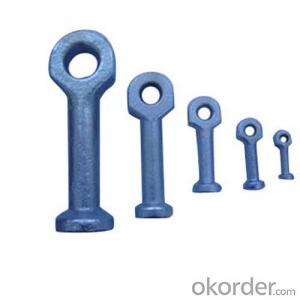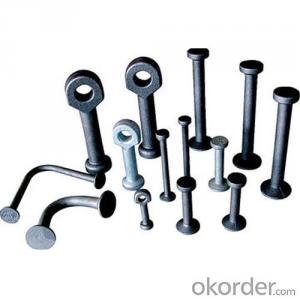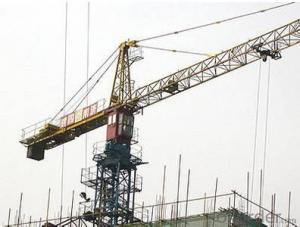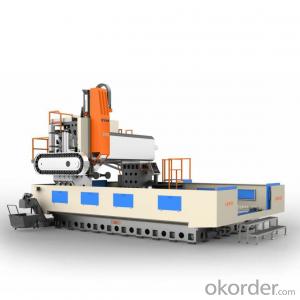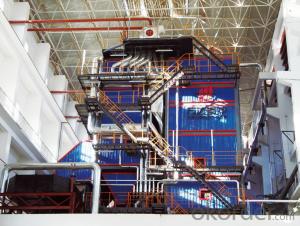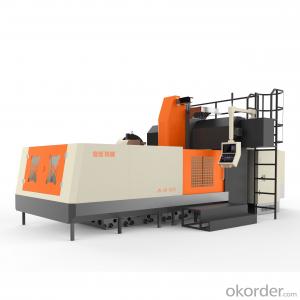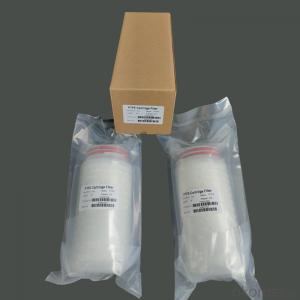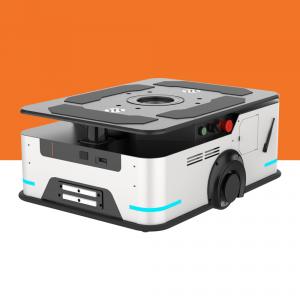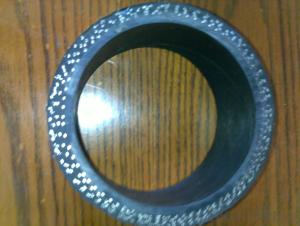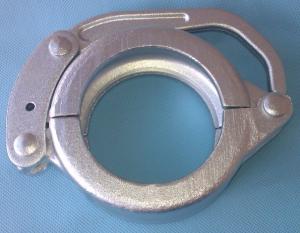Spherical Head Eye Anchor For Precast Concrete Accessories
- Loading Port:
- Tianjin
- Payment Terms:
- TT OR LC
- Min Order Qty:
- 100 pc
- Supply Capability:
- 10000 pc/month
OKorder Service Pledge
OKorder Financial Service
You Might Also Like
Lifting eye/O-anchor
Specifications:
1) Material: high-tensile alloy steel
2) Specifications: 1.3T, 2.5T (2T), 5.0T (4T), 10.0T (8T), 20.0T, 32.0T
3) Surface: zinc plating
4) Products available: swift lift, lifting eyes are used with the swift lift anchors to lift, handle and place precast concrete elements
Primary competitive advantages:
1)We can supply guarantee/warranty
2)Prompt delivery time within 25 days after confirming order
3)Eathu's products are enhanced by the factory QA and quality control checks during the production, if necessary each order can be send out with a certificate referring back to test
4)Precast concrete elements may be lifted several times after casting and during storage and erection-by using this system the designer and the worker manager ensure that each lift is carried out safely and quickly
Failure to use a designed and coordinated system could result in material breakage at some point during the production/delivery process
Market:
Asia
Australasia
Central/South America
Mid East/Africa
North America
Western Europe
FAQ:
Q1: How long about delivery time Concrete eye anchor ?
A1: The delivery time will be very short, normally we keep the raw materials for old customers and sometime we also keep stock products to
make sure delivery time in any emergency cases.
Q2: How do we guarantee the quality of our Concreteeye anchor ?
A2: We have established an advanced quality management system which conducts strict quality tests at every step, from raw materials to the final product. At the same time, we provide extensive follow-up service assurances as required.
Q3: How soon can we receive the product after purchase?
A3: Within three days of placing an order, we will book the vessel for goods. The specific shipping date is dependent upon international and government factors, but is typically 7 to 30 workdays.
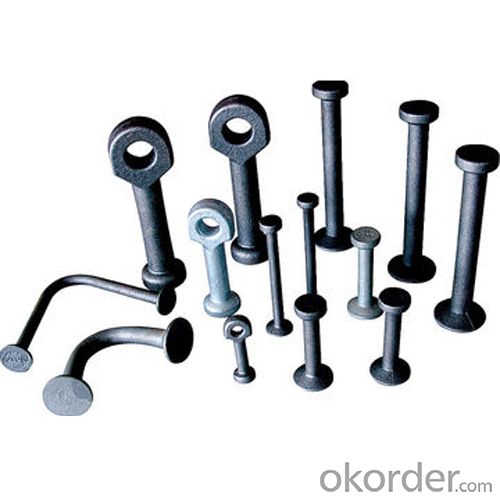

- Q:How often should I replace concrete pump spare parts?
- The frequency of replacing spare parts for concrete pumps is determined by several factors, including the quality of the parts, how frequently they are used, and regular maintenance. It is generally recommended to regularly inspect and maintain the spare parts to detect any signs of wear or damage. As a precautionary measure, it is advisable to replace parts that display significant wear or are no longer functioning optimally. However, it is essential to adhere to the manufacturer's guidelines and recommendations for the specific model of concrete pump being used. Additionally, seeking advice from experienced professionals or technicians in the field can offer valuable insights into the expected lifespan of different spare parts and when replacements may be required.
- Q:Are there any specific guidelines for the installation of wear plates or cutting rings in concrete pump spare parts?
- Specific guidelines exist for the installation of wear plates and cutting rings in concrete pump spare parts, as they are crucial for the proper functioning and longevity of the pump. To begin, it is important to thoroughly clean the surface where the wear plate and cutting ring will be installed, removing any debris, dust, or old material to ensure a smooth and secure fit. Before installation, it is necessary to inspect the wear plate and cutting ring for any damage or defects. Any worn-out or damaged parts should be replaced to prevent any potential issues during operation. To aid in alignment and ease of installation, a thin layer of lubricant or grease should be applied to the surface where the wear plate and cutting ring will be installed. The wear plate and cutting ring should then be carefully aligned with the designated slots or grooves in the concrete pump. Accurate positioning is crucial to avoid misalignment or premature wear. Appropriate tools or equipment should be used to secure the wear plate and cutting ring in place, such as tightening bolts, screws, or other fasteners. It is essential to follow the manufacturer's instructions and torque specifications for proper installation. After installation, a visual inspection should be performed to ensure that the wear plate and cutting ring are securely in place and correctly aligned. Any signs of misalignment or loose parts should be addressed immediately. Regular maintenance and inspection of the wear plates and cutting rings are essential to identify any signs of wear or damage. It is advisable to follow the manufacturer's recommendations for maintenance intervals and replacement schedules. By adhering to these specific guidelines, the proper installation and function of wear plates and cutting rings in concrete pump spare parts can be ensured, resulting in improved performance and an extended lifespan for the equipment.
- Q:How can a faulty gearbox affect the pump's performance?
- A faulty gearbox can negatively affect the pump's performance by causing issues such as uneven rotation, decreased efficiency, increased noise, and possible breakdowns.
- Q:How do I properly maintain and replace rubber pistons in concrete pump spare parts?
- Maintaining and replacing rubber pistons in concrete pump spare parts is crucial for the efficient operation of the pump and to ensure a longer lifespan of the equipment. Here are some steps to properly maintain and replace rubber pistons in concrete pump spare parts: 1. Regular Inspection: It is important to inspect the rubber pistons regularly to identify any signs of wear or damage. Look for cracks, tears, or any other visible signs of deterioration. 2. Cleaning: Before replacing the rubber pistons, make sure to thoroughly clean the area around the pistons. Remove any dirt, debris, or concrete residue that may be present. This will help prevent contamination and ensure a proper fit for the new pistons. 3. Proper Lubrication: Apply a suitable lubricant to the rubber pistons to ensure smooth operation and reduce friction. This will help prolong the life of the pistons and prevent premature wear. 4. Correct Installation: When replacing the rubber pistons, ensure they are properly installed according to the manufacturer's instructions. Use the correct tools and techniques to avoid damaging the pistons or other components of the pump. 5. Quality Replacement Parts: Always use high-quality replacement rubber pistons from reputable suppliers. Inferior quality pistons may not perform as well and could result in frequent replacements or damage to the pump. 6. Regular Maintenance: Implement a regular maintenance schedule for your concrete pump, including the rubber pistons. This can include cleaning, lubrication, and inspection of the pistons to identify any signs of wear or damage before they become major issues. 7. Training and Expertise: Ensure that the person responsible for maintaining and replacing the rubber pistons has the necessary training and expertise. This will help ensure the job is done correctly and minimize the risk of damage to the pump or injury to personnel. By following these steps, you can properly maintain and replace rubber pistons in concrete pump spare parts, ensuring optimal performance and longevity of the equipment.
- Q:How to operate the concrete pump?
- All the bolts of the pumping unit shall be fastened, and the pipe joints shall be tightly sealed. The protective devices shall be complete and reliable
- Q:Are there any specific training or certifications required for handling and installing concrete pump spare parts?
- Yes, there are specific training and certifications required for handling and installing concrete pump spare parts. Due to the specialized nature of the equipment and the potential risks involved, individuals who handle and install concrete pump spare parts should undergo proper training and obtain relevant certifications. Firstly, it is essential to have a thorough understanding of the functioning and components of concrete pumps. This knowledge can be acquired through comprehensive training programs offered by equipment manufacturers, industry associations, and vocational schools. These training programs cover topics such as pump operation, maintenance, troubleshooting, and safety protocols. Additionally, specific certifications may be required depending on the jurisdiction or industry standards. For example, the American Concrete Pumping Association (ACPA) offers a certification program known as the ACPA Operator Certification. This certification requires individuals to demonstrate their knowledge and skills related to concrete pumping equipment, including the handling and installation of spare parts. Obtaining these certifications ensures that individuals are equipped with the necessary knowledge and skills to handle and install concrete pump spare parts safely and efficiently. It also helps in maintaining compliance with industry regulations and standards. It is important to note that the specific training and certification requirements may vary depending on the region, industry, and the type of concrete pump being used. Therefore, it is recommended to consult local regulations and industry guidelines to ensure compliance with the necessary training and certification requirements for handling and installing concrete pump spare parts.
- Q:How do I identify the specific spare parts I need for my concrete pump?
- To identify the specific spare parts you need for your concrete pump, start by referring to the user manual or documentation provided by the manufacturer. This will often include a detailed parts list and diagrams that can help you identify the required components. If you don't have access to the manual, contact the manufacturer or a reputable supplier of concrete pump parts and provide them with the make, model, and serial number of your pump. They should be able to assist you in identifying the specific spare parts you need.
- Q:What are the different types of concrete pump hydraulic filters?
- There are three main types of concrete pump hydraulic filters: suction filters, return line filters, and pressure line filters. Suction filters are located at the inlet of the pump and prevent debris from entering the system. Return line filters clean the hydraulic oil as it returns from the system back to the reservoir. Pressure line filters are installed in the discharge line and remove contaminants before the oil reaches the hydraulic components.
- Q:How often should hopper grate clamps be inspected or replaced in a concrete pump?
- Hopper grate clamps in a concrete pump should be inspected regularly, ideally every 500 hours of operation, or at least once every six months. However, the frequency of inspection and replacement may vary depending on the specific conditions and usage of the concrete pump. It is important to closely monitor the condition of the clamps and replace them promptly if any signs of wear, damage, or loosening are observed to ensure optimal performance and safety.
- Q:Are there any specific recommendations for the inspection and testing of concrete pump spare parts?
- Yes, there are specific recommendations for the inspection and testing of concrete pump spare parts. Firstly, it is important to visually inspect the spare parts for any signs of damage, such as cracks, dents, or excessive wear. This can be done by carefully examining the parts and looking for any irregularities or abnormalities. Next, it is recommended to conduct non-destructive testing (NDT) to ensure the integrity and quality of the spare parts. NDT methods such as ultrasonic testing, magnetic particle testing, or dye penetrant testing can be used to detect any hidden defects or flaws in the parts. These tests can help identify potential issues that may affect the performance or safety of the concrete pump. In addition, it is advisable to check the dimensions and tolerances of the spare parts to ensure they meet the manufacturer's specifications. This can be done using precision measuring tools and comparing the measurements with the required specifications. Any deviations should be noted and addressed accordingly. Furthermore, functional testing should be conducted to ensure the spare parts are operating as intended. This can involve installing the parts in the concrete pump and carrying out various tests to verify their functionality and performance. For example, the pump can be tested for its flow rate, pressure, and efficiency to ensure optimal performance. Lastly, it is crucial to follow the manufacturer's guidelines and recommendations for the inspection and testing of concrete pump spare parts. These guidelines may provide specific instructions and procedures for inspecting and testing each type of spare part, ensuring that they are done accurately and safely. It is important to consult the manufacturer's documentation and seek professional advice if needed.
1. Manufacturer Overview |
|
|---|---|
| Location | |
| Year Established | |
| Annual Output Value | |
| Main Markets | |
| Company Certifications | |
2. Manufacturer Certificates |
|
|---|---|
| a) Certification Name | |
| Range | |
| Reference | |
| Validity Period | |
3. Manufacturer Capability |
|
|---|---|
| a)Trade Capacity | |
| Nearest Port | |
| Export Percentage | |
| No.of Employees in Trade Department | |
| Language Spoken: | |
| b)Factory Information | |
| Factory Size: | |
| No. of Production Lines | |
| Contract Manufacturing | |
| Product Price Range | |
Send your message to us
Spherical Head Eye Anchor For Precast Concrete Accessories
- Loading Port:
- Tianjin
- Payment Terms:
- TT OR LC
- Min Order Qty:
- 100 pc
- Supply Capability:
- 10000 pc/month
OKorder Service Pledge
OKorder Financial Service
Similar products
New products
Hot products
Hot Searches
Related keywords
